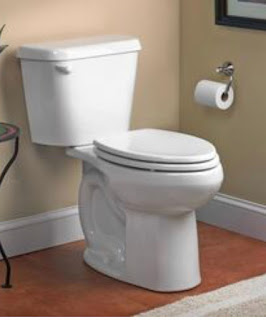PLANNING for your SEPTIC SYSTEM
You and your spouse just bought some land. Both of you are so excited about building and looking at floor plans. You are looking at different flooring and bathroom tiles, while your husband is dreaming about his new shop/outbuilding with built in man-cave. You find yourself a builder and that’s it! Right?
Well, sort of….
Now I know it isn’t the most exciting thing to consider, but one of the most expensive items in your house when building in the country is your septic system. You will spend somewhere between $12,000-15,000 on it depending on the number of bedrooms in the house. I’m no mathematician, but I doubt you’re spending that kind of money on other appliances. If you’re going to be writing that big of a check, don’t you think it would be wise to make sure you give this “appliance” your attention?
“What?!” you ask. “You want me to be more concerned about my wastewater than my flooring and tile?”
Yes, yes I do.
But not because I don’t want you to enjoy picking your flooring, tile and window dressings. I want you to really consider your wastewater system first and foremost so that someday when you have picked your floor plan and tile, you don’t have a horrible back up into your house that ruins all your nice new stuff. Also, when you’re paying an average $13,000 for a wastewater system, shouldn’t you do it right?
So, what are some things you need to know and understand when installing a septic system? Here’s a short list:
1. Placement of the septic system
You want to make sure that where ever you build your house, your system can flow downhill from it. You want your system to be able to use gravity as much as possible. This isn’t to say you can’t add a pump to move it someplace else, but adding a pump (or lift station) adds cost and extra problems later in life. Something you’ll notice happens pretty frequently in the country is the electricity goes out. When your electricity goes out, so does your pump that’s pumping all your waste AWAY from the house. So again, making sure your system can flow downhill and away from your home is a big deal. ALSO, the SOIL chooses where your septic system is placed. We can't just slap that sucker in anywhere we want. Mother Nature shows us what soils are good and bad. When you have someone take a perc test and they find good soil, THAT is where the lateral field needs to go -- where they took the test. Soils can change a lot on even a 3 acre plot, so be mindful of this as you plan. Where the perc test is taken that is where the system needs to be installed (assuming you get a passing rate...)
2. Wide open spaces
If you have plans for your lot or acreage to build more out buildings, make sure you do not plan to build where the lateral field needs to go. Think of your system as a GIANT sponge that gets used daily and needs to dry out daily. Building on it or around it can impede it’s drying process (and again cause back-ups into that beautiful new home). The best (longest lasting) systems are allowed to just be planted to brome grass and left alone. Nothing is built on them or near them. No trees are around. Just open space where they can evaporate daily. (No driving on them either – mowers and four-wheelers, but NOTHING heavier than that!)
3. Access to tank/landscaping
Remember that once you install your septic system it’s not just a “one and done” kind of scenario. Every 3-5 years you need to have this pumped. (It’s like changing the oil on your car, the more people the more frequently it needs to be pumped). Therefore, if you can plan where your tank will be placed this is also a good idea. When we come to pump a tank, we need to be around 60 feet to pump it, otherwise we have to drive on a yard. We try to avoid that as much as possible, but sometimes, that isn’t an option. Also, during wet or snowy months, if you have any problems, gaining access can be tricky. You might need to be pumped and we simply can’t get to your tank because of its location. We have had to be pretty creative sometimes, but here again, premature planning can help you.
Also, in regards to landscaping, be mindful of too much! Especially around your tank! We don’t want to mess up your yard any more than you want us to, but in order to pump the tank, we have to be able to get to it.
4. Installation timing (seasons in Nebraska)



Comments
Post a Comment